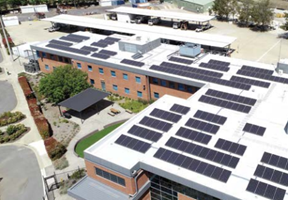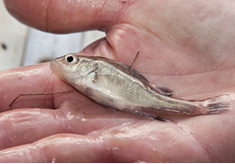
Protecting the environment
How does saving water help the environment?
In Australia we’re no strangers to drought, and while Canberrans are better protected than other parts of the country we need to make sure we use this precious, and finite, resource carefully.
But it’s not just our dam storage levels, and our wallets, that benefit when we save water – the environment benefits too.
Here’s how:
1. Water for the future  The population of Canberra and the world continues to grow – but the amount of water available for us stays the same. Using water carefully helps to make sure there’s water available next month, next year and for the next generation.
The population of Canberra and the world continues to grow – but the amount of water available for us stays the same. Using water carefully helps to make sure there’s water available next month, next year and for the next generation.
Canberrans have shown their commitment to the environment already. After the 2003 Canberra bushfires contaminated our water supplies, the goal was to reduce water consumption by 12 per cent by 2015, and 25 per cent by 2033.
Canberrans came on board and we very quickly smashed those goals, reducing consumption by 35-40 per cent – a reduction that continues to today.
If we can reduce this amount even more, we’ll all be better protected against the droughts of the future. This safeguards all parts of our environment, both natural and our built infrastructure.
2. Energy conservation
 Running infrastructure 24/7 to provide clean water and remove sewage across Canberra uses a lot of electricity – around 35,000 megawatt-hours (MWh) in total in 2018.
Running infrastructure 24/7 to provide clean water and remove sewage across Canberra uses a lot of electricity – around 35,000 megawatt-hours (MWh) in total in 2018.
We offset this as much as possible – for example when water supplies are plentiful we source our water through a gravity-fed main from Bendora Dam; and we’ve rolled out 2.29 megawatts of solar PV panels across five of our sites – enough to reduce our impact to the electricity grid by 12 per cent. (More about our energy and environment conservation work here.)
But the fact remains that it’s energy-intensive work. And while some of our energy use stays the same regardless of how much water Canberrans use, there are other benefits we can see from reduced water consumption.
For example, reducing the amount of energy used in the pumping of water reduces our carbon emissions, which contribute to climate change.
Using less chemicals in the treatment of water and wastewater means there is less energy and materials used in their production, and fewer by-products and chemical waste to contend with.
3. Environmental conservation
There are two ways your water saving measures will help the environment.
The urban plant and animal ecosystem – smart gardening
 In a drought it’s not just our dams that have less water; the rivers flow more slowly, ponds and dams get smaller, and all the plants and animals that bring our ‘bush capital’ to life are affected.
In a drought it’s not just our dams that have less water; the rivers flow more slowly, ponds and dams get smaller, and all the plants and animals that bring our ‘bush capital’ to life are affected.
If drought continues, shrubs and trees become affected so there’s less habitat for birds and smaller creatures to nest; less food for the plant-eating animals; and less pollen for the bees. This quickly has flow on effects to the other animals and plants that are connected in our delicate ecosystem.
If Canberrans take steps in the early stages of drought – like now – to make sure our gardens, trees and lawns are drought tolerant, properly mulched and watered smartly, these critical green spaces can survive and even thrive during extended dry spells. With responsible gardening, we can reduce our outdoor water use and support our environment at the same time.
Supporting fish populations
 Canberrans enjoy water from four dams in the ACT and NSW, but there are species that call these dams home. Four native species of endangered or threatened fish live in the Cotter River and Cotter Reservoir, and as dam levels drop their habitat is under threat. Less water in the dam means fewer places to hide from bird predators and a restricted ability to move to spawning areas, threatening the viability of the population.
Canberrans enjoy water from four dams in the ACT and NSW, but there are species that call these dams home. Four native species of endangered or threatened fish live in the Cotter River and Cotter Reservoir, and as dam levels drop their habitat is under threat. Less water in the dam means fewer places to hide from bird predators and a restricted ability to move to spawning areas, threatening the viability of the population.
